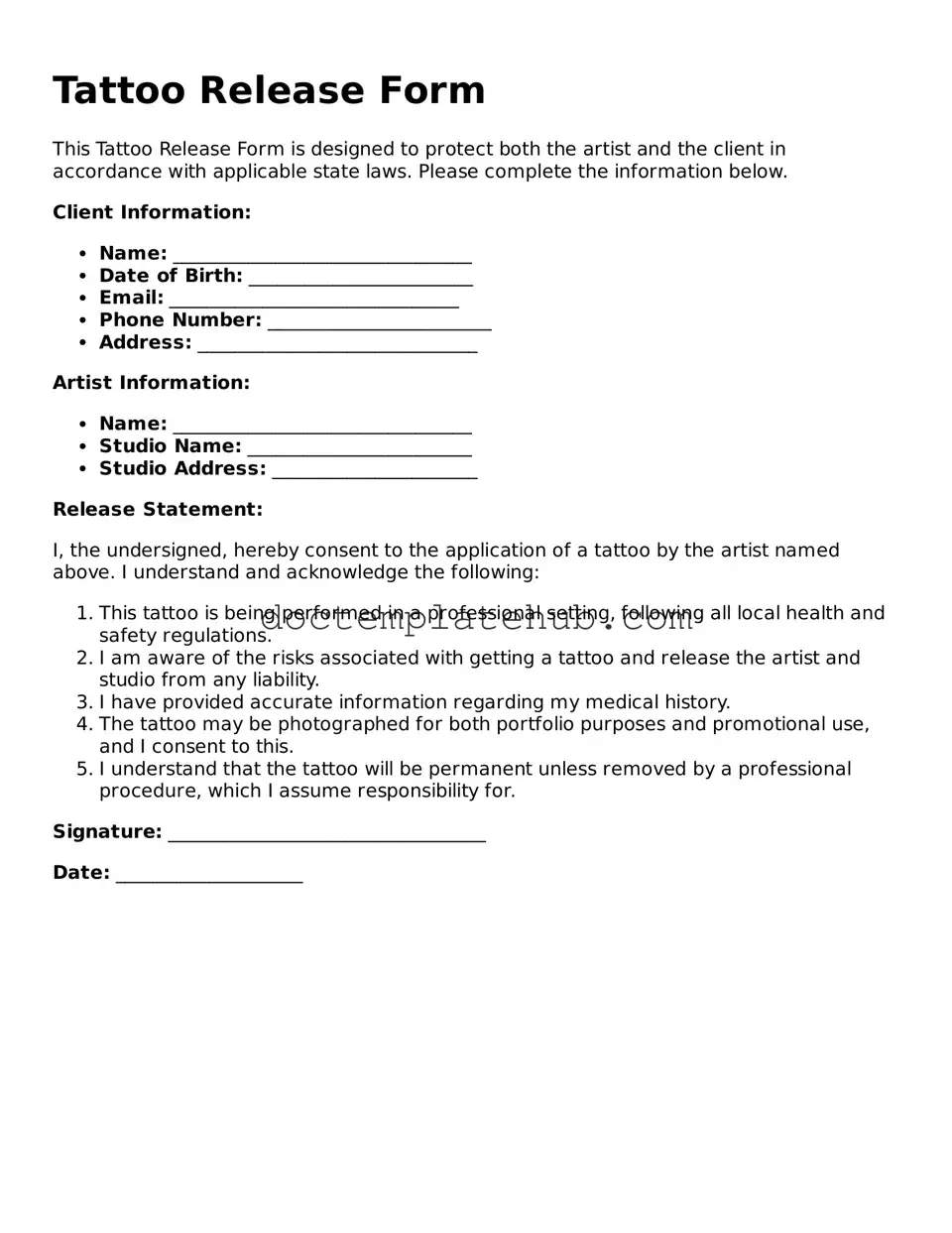What is a Tattoo Release form?
A Tattoo Release form is a legal document that allows a tattoo artist to obtain permission from a client to tattoo them. It outlines the responsibilities of both parties and ensures that the client understands the risks involved in getting a tattoo.
Why do I need to sign a Tattoo Release form?
Signing a Tattoo Release form protects both you and the tattoo artist. It confirms that you are aware of the potential risks and complications associated with tattoos. Additionally, it helps the artist avoid liability for any issues that may arise during or after the tattooing process.
What information is typically included in a Tattoo Release form?
The form usually includes your personal information, details about the tattoo you want, and a section outlining the risks involved. It may also contain a statement regarding your health and any allergies you may have, as well as a section for the artist's signature.
Can I get a tattoo without signing the form?
Most tattoo studios require you to sign a Tattoo Release form before getting a tattoo. This is a standard practice to ensure that both you and the artist are protected legally. Without this signed document, the artist may refuse to proceed with the tattoo.
What if I am under 18 years old?
If you are under 18, you typically need parental consent to get a tattoo. A parent or guardian must sign the Tattoo Release form on your behalf. Some states have specific laws regarding the minimum age for tattoos, so it's important to check local regulations.
What happens if I have a bad reaction to the tattoo?
While the Tattoo Release form informs you of potential risks, it does not absolve the artist of responsibility for negligence. If you experience a bad reaction, it's essential to seek medical attention. Document any issues and communicate with the tattoo artist about your experience.
Can I change my mind after signing the form?
Once you sign the Tattoo Release form, you are committing to the tattoo process. However, if you have concerns or feel uncomfortable, communicate with the artist. They may allow you to postpone or reschedule your appointment to ensure you are ready.
Is my personal information safe when I sign the form?
Reputable tattoo studios take your privacy seriously. They should have measures in place to protect your personal information. If you have concerns about how your data will be used or stored, ask the studio about their privacy policies before signing the form.
What should I do if I lose my copy of the Tattoo Release form?
If you lose your copy, contact the tattoo studio as soon as possible. They may have a record of your signed form. It's always a good idea to keep a copy for your records, as it can be helpful for future reference or if any issues arise.
Do I need to sign a new form for each tattoo?
Yes, generally, you will need to sign a new Tattoo Release form for each tattoo. Each tattoo is a separate procedure, and the artist needs to ensure you understand the specific details and risks associated with that particular design.
